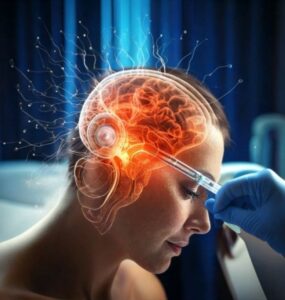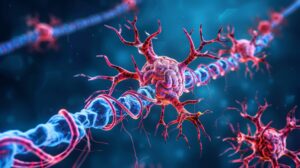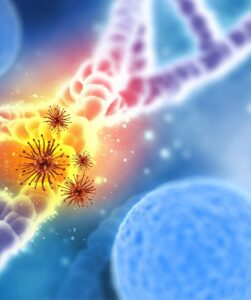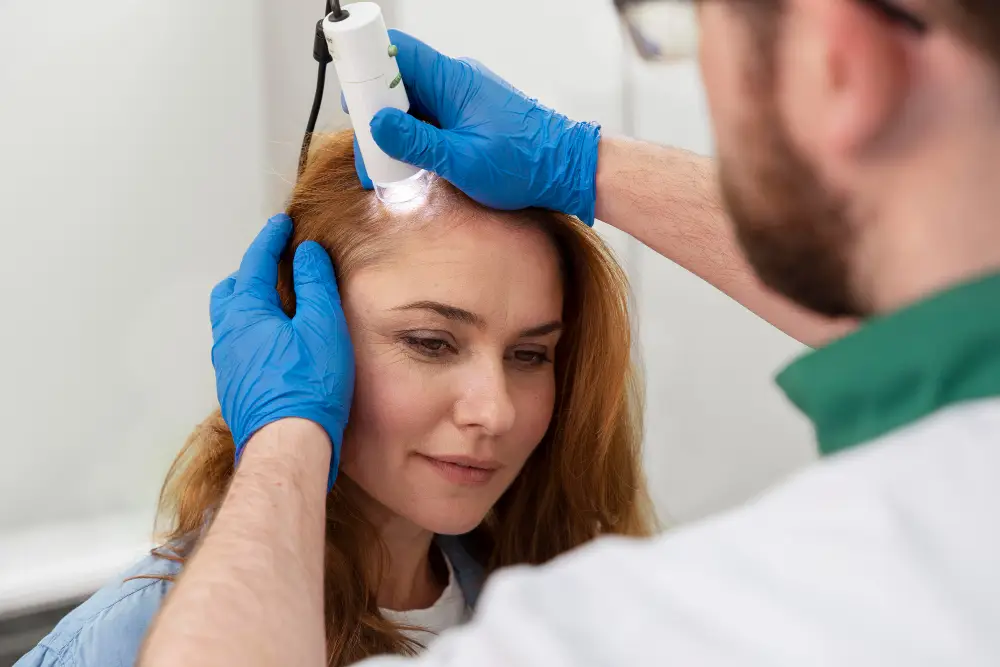
Nerve Damage Stem Cell Treatment: Exploring Regenerative Pathways in Colombia
Key Takeaways for Your Journey
- Nerve damage can significantly impact quality of life, leading many to explore advanced regenerative options beyond conventional treatments.
- Stem cell research, particularly involving Mesenchymal Stem Cells (MSCs), offers promising insights into potential mechanisms for peripheral nerve regeneration, including neurotrophic support and immune modulation.
- Colombia, with its robust healthcare infrastructure and regulatory bodies like INVIMA, provides a regulated and supportive environment for exploring advanced medical pathways.
- The Regencord team in Pereira, Colombia, emphasizes education, transparent guidance, and a patient-centric approach to help individuals understand their options.
- Navigating your choices begins with a confidential case review to assess suitability and provide personalized information, guiding you from uncertainty to informed action.
Introduction: Navigating the Complexities of Nerve Damage
Living with nerve damage can be an isolating and profoundly challenging experience. Whether it’s the result of an injury, illness, or a chronic condition, the impact on motor and sensory function, coupled with persistent pain, can diminish quality of life significantly. Many individuals find themselves on a long journey, often feeling frustrated as conventional treatments may offer only limited relief or halt progression without addressing the root cause of nerve impairment.
In this guide, the team at Regencord in Pereira, Colombia, aims to provide a comprehensive, educational resource for those exploring advanced options like stem cell treatment for nerve damage. Our goal is to empower you with clarity, address common concerns, and illuminate the potential of regenerative pathways, all within an ethical and transparent framework. We understand the emotional and physical toll nerve damage takes, and our focus is on guiding you toward informed decisions.
This article will delve into the current understanding of nerve regeneration, explore the scientific principles behind stem cell approaches, and highlight why Colombia, and specifically Pereira, has emerged as a compelling destination for individuals seeking such care. It is an exploration of hope, grounded in verifiable information and a commitment to patient advocacy.
The Stakes: Critical Implications of Nerve Damage

Nerve damage, or neuropathy, encompasses a wide range of conditions affecting the peripheral or central nervous system. The implications can be far-reaching, from debilitating pain and numbness to muscle weakness, paralysis, and loss of independence. Conditions like peripheral nerve regeneration, often a focal point of research, are critical because these nerves control voluntary movements and transmit sensory information, making their healthy function essential for daily life.
The U.S. National Institutes of Health (NIH) consistently highlights the complex nature of nerve repair, noting that successful regeneration is often incomplete or challenging, particularly in severe cases. This reality fuels the ongoing search for more effective interventions, which is where regenerative medicine, including the exploration of Mesenchymal Stem Cells (MSCs), enters the conversation.
Understanding the Challenge of Nerve Regeneration
Nerves, particularly axons – the long, slender projections of nerve cells that conduct electrical impulses – have a limited capacity for self-repair after injury. This is influenced by many factors, including the type and severity of injury, location, and the presence of inhibitory molecules. The goal of regenerative approaches is to foster an environment conducive to natural repair and functional recovery.
For individuals, the stakes are deeply personal. They involve the potential to regain lost function, reduce chronic pain, and improve overall independence and well-being. The pursuit of advanced options is often driven by a desire to reclaim aspects of life that nerve damage has taken away.
The Conventional Approach to Nerve Damage in Colombia

In Colombia, as in many parts of the world, the initial management of nerve damage typically involves a multi-faceted approach aimed at symptom management, preventing further damage, and promoting rehabilitation. This often includes:
- Physical Therapy: Essential for maintaining muscle strength, flexibility, and preventing atrophy, as well as retraining motor skills.
- Medication: Pain relievers, anti-inflammatory drugs, anticonvulsants, and antidepressants are often prescribed to manage neuropathic pain and other symptoms.
- Surgery: In cases of nerve compression or severe trauma, surgical intervention may be necessary to decompress the nerve or repair severed nerve endings.
- Occupational Therapy: To help individuals adapt to functional limitations and improve their ability to perform daily tasks.
- Lifestyle Adjustments: Including dietary changes, exercise, and managing underlying conditions like diabetes that can contribute to nerve damage.
These conventional methods, overseen by entities like the Ministerio de Salud y Protección Social de Colombia, form the bedrock of care. While often effective in managing symptoms and providing some degree of recovery, many patients with persistent or severe nerve damage find themselves seeking complementary or advanced avenues when the conventional approach reaches its limits. This quest for deeper neural differentiation, axonal regrowth, and myelination improvement often leads them to explore regenerative medicine.
The Pereira, Colombia Advantage: A New Horizon for Care

For those exploring advanced pathways for conditions like nerve damage, Pereira, Colombia, offers a distinct and compelling advantage. This isn’t merely about finding a new treatment; it’s about finding a supportive ecosystem for your entire patient journey. As highlighted by our team’s deep experience in facilitating international medical care, patients often need more than just clinical excellence; they need a context that promotes healing and reduces stress.
Robust Infrastructure & Regulatory Oversight
Colombia has invested significantly in its healthcare infrastructure, with modern facilities, advanced technology, and highly trained medical professionals. Institutions like INVIMA (Instituto Nacional de Vigilancia de Medicamentos y Alimentos) ensure rigorous oversight of medical procedures, devices, and biological products. This commitment to regulatory standards provides a framework of safety and legitimacy that patients seeking advanced therapies can trust. The team at Regencord operates within these stringent national guidelines, ensuring a focus on ethical, evidence-informed practices.
A Serene & Conducive Environment for Healing
Nestled in the heart of Colombia’s picturesque coffee region, Pereira offers a unique blend of urban sophistication and natural tranquility. This serene environment is a stark contrast to the often high-stress, impersonal atmosphere of larger medical hubs. The gentle climate, lush landscapes, and slower pace of life contribute to a holistic care environment that supports both physical and emotional recuperation. This particular contextual advantage, often underestimated, can significantly impact a patient’s overall well-being during their treatment journey.
Integrated & Patient-Centric Care
The team at Regencord in Pereira understands that patients suffering from nerve damage often present with a complex tapestry of physical and emotional challenges. We prioritize an integrated approach, where patient education and empowerment are paramount. This means not just focusing on the potential biological mechanisms like neurotrophic support or angiogenesis stimulation but also on the complete individual. Our patient advocacy approach ensures clear communication, meticulous planning, and compassionate support every step of the way, transforming a potentially overwhelming process into a guided pathway.
Choosing to explore advanced care in Pereira means opting for a setting where medical excellence, regulatory adherence, and a supportive, healing environment converge, allowing for a more focused and reassuring experience.
Your Practical Resource: La Brújula Regencord para la Recuperación Nerviosa

To help you navigate the complexities of understanding nerve damage and exploring potential regenerative pathways, the Regencord team has developed “La Brújula Regencord para la Recuperación Nerviosa” (The Regencord Compass for Nerve Recovery). This branded patient resource tool is designed to be your guide through the information-gathering process.
What is La Brújula Regencord?
It’s a comprehensive checklist and informational guide designed to:
- Clarify Concepts: Demystify terms related to nerve damage, Mesenchymal Stem Cells (MSCs), neural differentiation, Schwann cell transformation, and other relevant aspects of regenerative medicine.
- Structure Your Questions: Provide a framework for the key questions you should ask any potential provider, ensuring you gather all necessary information for an informed decision.
- Outline Your Journey: Detail the typical steps involved in exploring advanced medical care, from initial confidential case review to understanding logistical considerations in Pereira, Colombia.
- Promote Self-Advocacy: Empower you to be an active participant in your care, equipped with knowledge and confidence.
This tool is an integral part of our commitment to transparent education and patient empowerment, ensuring you have the resources needed to make the best choices for your health journey.
Our Regenerative Philosophy & Approach: Understanding the Potential

The Regencord team’s philosophy is rooted in exploring the body’s intrinsic capacity for healing and regeneration, particularly in areas like nerve damage where conventional treatments often fall short. We focus on educational insights into how advanced therapies, such as those involving stem cells, are believed to work, without making unverified claims or guaranteeing outcomes.
The Science of Regenerative Exploration for Nerve Damage
Research published in PubMed-indexed peer-reviewed journals extensively explores the potential mechanisms of Mesenchymal Stem Cells (MSCs) and other cellular therapies in nerve regeneration. These mechanisms are diverse and complex, often involving:
- Neurotrophic Support: MSCs can secrete growth factors that support the survival and growth of existing neurons and promote axonal regrowth. This neurotrophic support is vital for nerve healing.
- Immune Modulation and Neuroinflammation Control: Nerve injuries often lead to inflammation, which can hinder regeneration. MSCs are known for their immunomodulatory properties, helping to reduce neuroinflammation and create a more conducive environment for repair.
- Schwann Cell Transformation & Myelination Improvement: Schwann cells are critical for myelin formation, which insulates nerve fibers and speeds up signal transmission. Research suggests MSCs may support or even differentiate into Schwann-like cells, aiding in remyelination and improved nerve conductivity.
- Angiogenesis Stimulation: Healthy blood supply is essential for tissue repair. MSCs can stimulate the formation of new blood vessels (angiogenesis), enhancing nutrient and oxygen delivery to the injured site.
- Extracellular Vesicles/Exosome Therapy: Beyond the cells themselves, the therapeutic potential of extracellular vesicles and exosomes released by stem cells is also being investigated for their ability to deliver bioactive molecules that promote healing.
It’s crucial to understand that these are areas of ongoing scientific inquiry and clinical exploration. Our approach centers on providing access to information and pathways that align with current scientific understanding and ethical standards, focusing on patient education and a thorough assessment of individual suitability.
Not a “Cure,” But a Pathway for Exploration
We believe in transparent communication. Regenerative medicine for nerve damage is not presented as a “cure” but as a sophisticated pathway that may support the body’s natural regenerative processes. The Regencord team’s role is to facilitate access to and understanding of these options, empowering patients to make informed choices based on a comprehensive review of their unique condition and the available scientific evidence.
Overcoming Common Hesitations: Why Seeking Clarity is a Strategic Advantage
The journey to exploring advanced medical options for nerve damage can be fraught with uncertainty. Many patients arrive with valid concerns rooted in past disappointments, financial anxieties, or skepticism about new treatments. The team at Regencord in Pereira understands these psychological barriers and is committed to dismantling them through transparency and comprehensive support.
“Is stem cell treatment for nerve damage legitimate or regulated in Colombia?”
This is a critical and entirely valid concern. The field of stem cell therapy has unfortunately been associated with unregulated practices in some parts of the world. However, Colombia, through regulatory bodies like INVIMA and the Ministry of Health, maintains a robust framework for overseeing medical procedures and biological products. The team at Regencord operates strictly within these national guidelines, emphasizing evidence-informed approaches and ethical standards. Our commitment is to separate legitimate exploration from speculative claims, ensuring patient safety and adherence to established protocols. By understanding Colombia’s regulatory environment, you can approach these options with greater confidence.
“I’ve tried so many things already for my nerve damage. Why would exploring this be different?”
We deeply acknowledge the frustration that comes with a long and often disheartening journey through various treatments. It’s natural to feel skeptical when previous interventions haven’t yielded the desired results. However, regenerative approaches for nerve damage are fundamentally distinct from conventional symptomatic treatments. Instead of merely managing pain or offering temporary relief, these pathways focus on modulating the biological environment to support the body’s natural repair processes. This can include promoting neurotrophic support, controlling neuroinflammation, and fostering axonal regrowth. The argument isn’t that it’s a guaranteed solution, but that it’s a different, more foundational approach that merits understanding if conventional methods have reached their limits for you.
“This sounds too complicated and overwhelming, especially within a new medical context.”
The logistics of seeking advanced medical care, even within your own country or a familiar region, can indeed feel daunting. From understanding complex medical terminology to navigating administrative processes, it’s easy to feel lost. This is precisely where the patient advocacy team at Regencord in Pereira becomes your invaluable partner. We directly address logistical anxieties by outlining a clear, step-by-step patient journey. From your initial confidential case review to travel coordination (if applicable), understanding regulatory requirements, and post-treatment guidance, our team simplifies the process. We transform the perception of a complex journey into a manageable, supported pathway, ensuring you feel guided and informed at every turn.
“What are the *real* expectations? I don’t want false hope.”
Setting realistic expectations is paramount to an ethical approach. We understand the desire for clear answers and the fear of disappointment. Regenerative medicine for nerve damage is an evolving field, and suitability for any specific pathway depends entirely on the unique aspects of each patient’s condition, including the type, severity, and duration of their nerve damage. Our approach prioritizes an individualized assessment. A confidential case review is not a promise of a specific outcome, but a crucial step to determine if exploring these options is suitable for *your specific condition*. This empowers you with knowledge and realistic insights, guiding you toward informed exploration rather than broad, unsubstantiated promises.
Seeking clarity through a confidential review is not just another step; it’s a strategic advantage, transforming uncertainty into informed decision-making.
Glossary of Key Terms
- Axonal Regrowth: The re-establishment of the axon (the nerve fiber that conducts electrical impulses) after injury.
- Angiogenesis Stimulation: The process of forming new blood vessels, crucial for delivering oxygen and nutrients to healing tissues.
- Biomaterial-based Nerve Grafts: Engineered scaffolds or materials used to bridge gaps in damaged nerves and guide regeneration.
- Extracellular Vesicles (EVs)/Exosome Therapy: Tiny vesicles released by cells, including stem cells, that carry bioactive molecules and can influence cellular processes in recipient cells.
- Immune Modulation: The process of altering or regulating the immune response, often to reduce inflammation or suppress harmful immune reactions.
- Induced Pluripotent Stem Cells (iPSCs): Adult cells that have been genetically reprogrammed to an embryonic-like pluripotent state, capable of differentiating into various cell types.
- Mesenchymal Stem Cells (MSCs): Multipotent stromal cells that can differentiate into various cell types and possess immunomodulatory and trophic properties.
- Myelination Improvement: The process of improving the formation of myelin, the insulating sheath around nerve fibers that enhances signal transmission.
- Neural Differentiation: The process by which stem cells develop into specific types of nerve cells.
- Neuroinflammation Control: Managing and reducing inflammation in the nervous system, which can impede nerve repair.
- Neurotrophic Support: The provision of factors (neurotrophic factors) that promote the survival, growth, and function of neurons.
- Peripheral Nerve Regeneration: The process of regrowth and repair of nerves outside the brain and spinal cord.
- Schwann Cell Transformation: The process where cells (potentially stem cells) develop characteristics similar to Schwann cells, which produce myelin and aid in nerve repair.
Frequently Asked Questions (FAQ)
What exactly is nerve damage, and how does it occur?
Nerve damage, or neuropathy, refers to injury or disease of nerve tissue. It can result from trauma (e.g., cuts, crushing injuries), compression (e.g., carpal tunnel syndrome), systemic diseases (e.g., diabetes), infections, toxins, or genetic conditions. It manifests as symptoms like pain, numbness, tingling, weakness, or paralysis, depending on the affected nerves.
Are stem cell treatments for nerve damage approved in Colombia?
In Colombia, medical procedures and the use of biological products are regulated by bodies such as INVIMA (Instituto Nacional de Vigilancia de Medicamentos y Alimentos) and the Ministry of Health. While research and clinical exploration in regenerative medicine, including stem cell applications for nerve damage, are ongoing and carefully monitored, specific therapies are assessed based on individual protocols and scientific evidence. Ethical providers, like the team at Regencord, operate within these established regulatory frameworks, focusing on evidence-informed approaches and patient safety.
How do Mesenchymal Stem Cells (MSCs) potentially help with nerve damage?
MSCs are thought to contribute to nerve regeneration through several mechanisms. These include secreting neurotrophic factors that support nerve cell survival and growth, modulating the immune response to reduce inflammation, and potentially differentiating into cells that aid in myelination or directly promote axonal regrowth. The goal is to create a more favorable environment for the body’s natural repair processes.
What should I expect during a confidential case review with the Regencord team?
A confidential case review is a thorough, personalized discussion designed to understand your specific medical history, the nature of your nerve damage, previous treatments, and your health goals. Our team will review your medical records and discuss whether exploring regenerative pathways may be a suitable option for your unique situation. This is an educational and informative step, not a commitment to treatment, and it’s essential for setting realistic expectations and clarifying your potential pathway.
What makes Pereira, Colombia, a good choice for exploring advanced medical care?
Pereira combines modern medical infrastructure, highly trained professionals, and a robust regulatory environment ( overseen by INVIMA and the Ministry of Health) with a serene, natural setting conducive to healing. The quality of care, often more accessible than in other regions, along with a focus on comprehensive patient support, creates a unique advantage for individuals seeking advanced options like those for nerve damage. The Regencord team’s deep commitment to patient advocacy further enhances this experience.
Discover if you are a candidate for the regenerative medicine pathways available through the team at Regencord in Pereira, Colombia.
Disclaimer: This content is for educational purposes only and does not constitute medical advice or a guarantee of treatment outcomes. The information provided is not intended to diagnose, treat, or cure any medical condition. Individual results may vary. All decisions regarding medical care should be made in consultation with a qualified healthcare professional. Veris Salus LLC serves as a marketing and patient-coordination facilitator for medical services. For personalized medical advice, please contact a healthcare provider directly.



